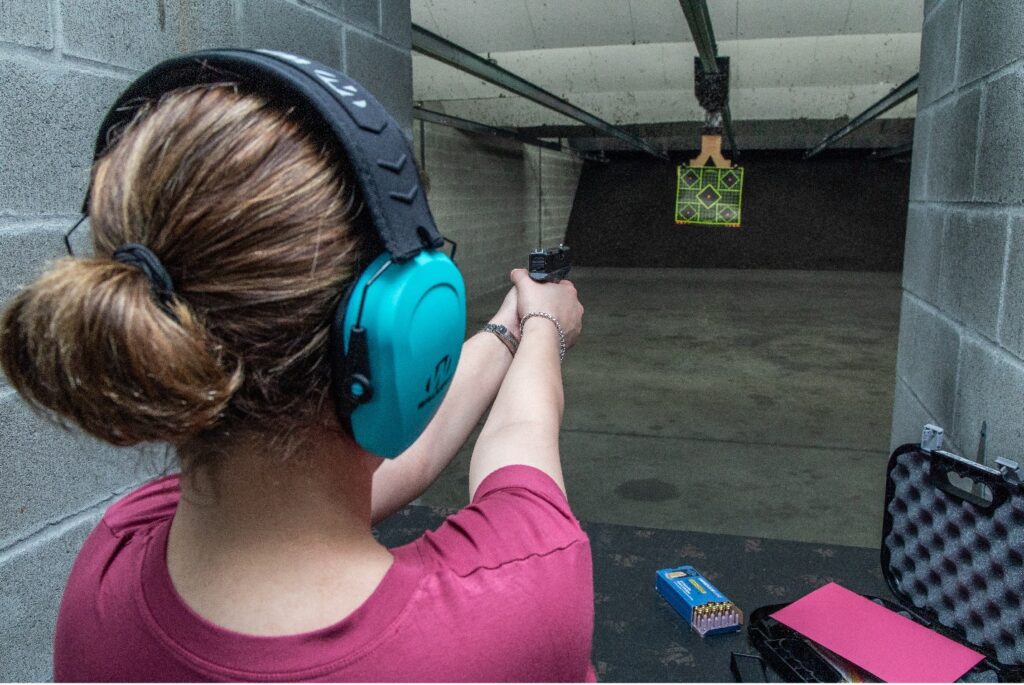It doesn’t matter whether you’re a first-time owner of an AR15 sporting an upper receiver loaded with fancy scopes and accessories or a semi-automatic pistol perfect for concealed carry or home defense. There are still a few things a new gun owner must do before ever firing that first shot.
It’s hard not to suffer a stimulation overload when you first step into a gun shop. As you spin around in amazement, gazing at all the different types of firearms, rifle scopes and accessories, you’ll soon discover that the decision of purchasing what you were initially thinking about is going to be a lot tougher than you first imagined.
Safety First
One of the most crucial aspects of purchasing a gun for the first time is learning how to operate it safely. Remember all the written tests you had to pass and the final driving ritual you had to manage successfully to get your driver’s license? The same goes for learning how to work a firearm properly. One of the best initial rules to practice is always to assume that a gun is loaded and handle it accordingly.
If not strapped for cash, then consider taking safety classes. Several gun stores offer gun safety classes. Also, almost every one of the local ranges in your area provides well-coordinated and structured lessons that are informative and inexpensive. If you’re living in sunny California, the state’s laws require you to demonstrate you know how to safely handle a weapon before you can take it home with you.
Try It Out Before You Take It Out
Purchasing a firearm is a very personal decision for most first-time gun owners. While it’s unlikely you’ll be able to live fire the gun you’re picking out, you should at the least see how it handles against your shoulder or in your hand.
Is it heavy and requires awkward hand movement when gripping the pistol or sighting through the scope on the barrel of that rifle you’re examining? What about the operation of the safety? If you’re left-hand oriented, you’ll want to make sure the safety is genuinely ambidextrous, and you can easily activate it or flip it off.
Operating the safety is particularly important when getting a shot off quickly becomes necessary. While in the store, watch how the store associate handles the firearm you want to purchase and practice them several times in the store, with your finger off the trigger, of course.
Dry Fire Practice First
Before taking your newly purchased firearm to the range for the first time, you’ll probably want to perform a few dry fire practice sessions first. While not as thrilling as firing live rounds at a target, dry fire practice will help you eventually form some excellent shooting habits such as proper stance, rifle or pistol grip, sight alignment, and, more importantly, trigger control.
Practice keeping your trigger finger off the trigger when not in firing mode. Your trigger finger should always remain above the trigger guard and along the length of the pistol or rifle when not engaged. When it’s time to pull the trigger, curl your finger around the trigger, remembering to squeeze, not yank, and when finished, always take your finger off the trigger, and return it to a position above the trigger guard.
When it comes to proper shooting stance, most experts agree that the Weaver stance is a good shooting position. Remember to place your non-shooting foot extended forward about ten inches from center and pointing at your target. Place your shooting foot as close as forty-five degrees from center, ensuring it feels comfortable, bend your knees slightly, and make sure your back is straight. When it comes to proper grip, pick up your rifle or pistol with your dominant hand. Your non-dominant hand will typically rest along the forend or handguard with a gun such as an AR15.
In contrast, with a semi-automatic pistol, you’ll want to cradle your non-dominant hand around and beneath your shooting hand for support. When shooting a semi-automatic pistol, remember to keep the fingers and thumbs of both hands safely beneath the slide. Many first-time shooters have suffered slide bites on a thumb or finger when the action moves backward with sufficient force that it can cause serious injury. Shooting targets at the range shouldn’t involve a situation where blood loss takes place.
First Day at The Range
If you want the first day at the range to be a pleasant experience, you’ll need to do a little pre-fire investigation. Check out the range rules and have a conversation with one of the range masters. They will more than likely remind you to bring proper PPE or personal protective equipment such as earplugs or a set of functioning earmuffs and, of course, eye protection.
They’ll also remind you to practice safety when shooting by keeping your finger off the trigger when not firing your gun and always keeping the muzzle of your firearm pointing downrange. Most inside ranges won’t let you step into the firing range without wearing PPE, so a little bit of preparedness will go a long way.
Additionally, wear a long-sleeved shirt or blouse, and leave those comfortable flip-flops or Crocs at home. Wear a comfortable but sturdy pair of shoes, and make sure the shirt or blouse you’re wearing fits snugly around the neck. While the PPE may seem to make logical sense, you’re probably wondering about the clothing suggestions.
Remember that you will be standing in a booth during your firing session, and those heated spent shells once ejected from your gun must go somewhere. It’s not uncommon for a stray cartridge to ricochet off the wall of the booth and hit your neck, arms, or your feet. By their nature, these ejected cartridges are hot enough to leave a burn mark on exposed skin.
When at the range, consistently practice muzzle security by ensuring your firearm is always pointed downrange and your finger is off the trigger when not firing. Also, remember to pick up and discard your spent cartridges before you leave. If you continue to practice these habits, you’ll soon exhibit the traits of a veteran shooter even though you’ve only made a couple of live-fire trips to the range.
Practice Practice Practice
Owning and firing a gun is truly a different type of recreational world of thrilling entertainment and over time, you’ll learn multiple ways of loading your firearm, various types of shooting stances and good shooting habits, and probably a few upgrades to your existing gun based on those new-found habits. Of course, more practice sessions mean you’ll eventually get used to the ammunition’s explosive sounds and recoil until both are barely noticeable.
When it comes to gun ownership, practicing continued safety when handling your firearm, learning how to break down and clean your gun, and making frequent visits to the range or heading out on annual hunting trips will soon become one of the best forms of recreation around.



